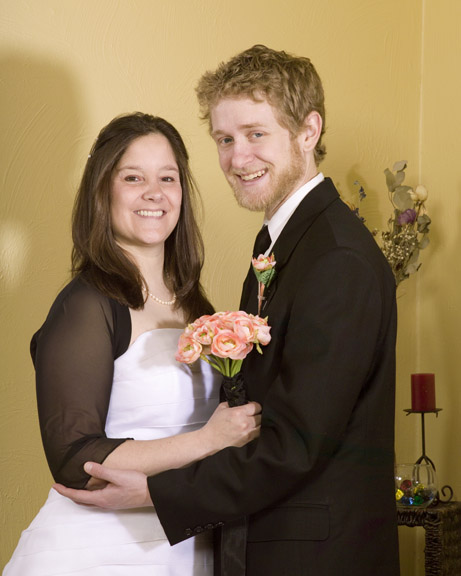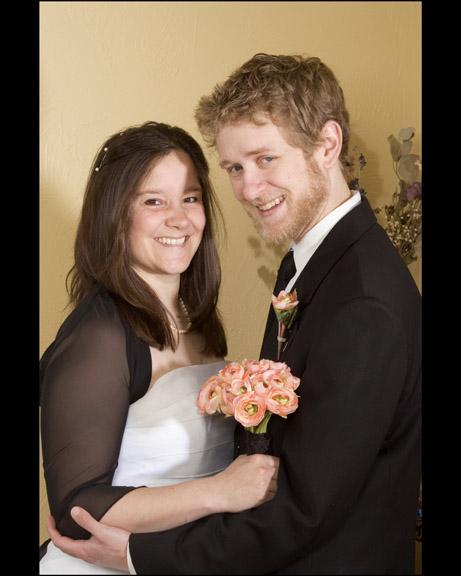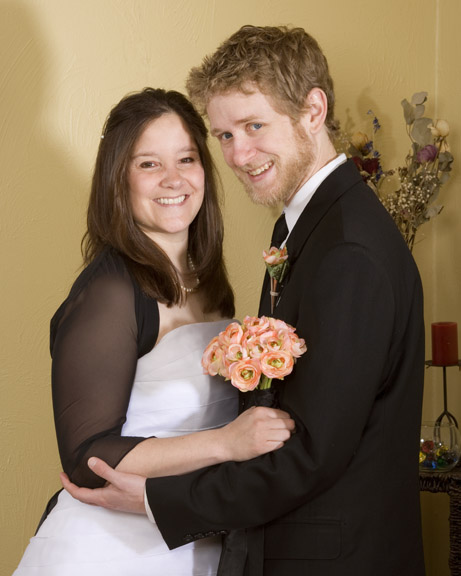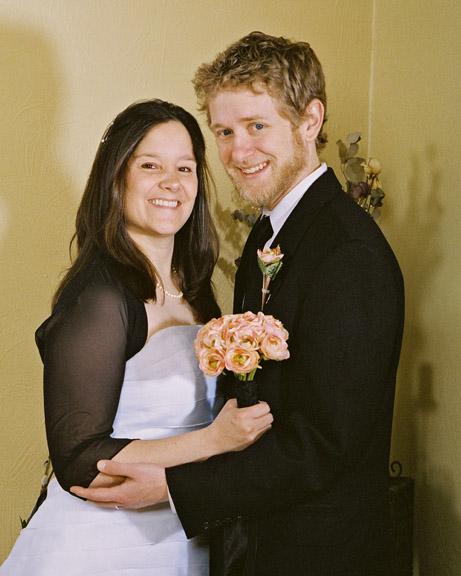


 Medium Format Digital vs. the Rest of the Camera World
Medium Format Digital vs. the Rest of the Camera World
Recently, I had the opportunity to compare four of the premier image capture devices on the market today. Three of the entrants were digital cameras or backs and the fourth, a tried and true medium format film back. The four competitors were a Canon 1D Mark II, a Canon 1Ds Mark II, a Leaf Aptus 75 digital back for a Mamiya 645 AFDII, and a Mamiya 645 AFDII with Portra 120 400VC film. The price of the four ranges from 4,000 on the low end for the Mamiya film setup and the Canon 1d to about 30,000 for the Leaf Aptus back. Certainly, one of the interesting aspects of this qualitative comparison was to see if you really do get eight times the quality out of a Leaf back for eight times the price over a medium format film camera or a Canon 1D. Although there were discernible differences between the cameras, there were no clear losers. I must say I was impressed by how well all four devices represented.
A word should be mentioned at the outset about the Leaf Aptus back. At the time of testing, my back was still a preproduction model. As is the case with all beta products there were a few kinks that I am sure will be ironed out before the final product hits the market. My back froze when used with the electronic mirror lock-up feature of the Mamiya AFDII and would not power back up until powered off over night. I was able to shoot about 50 frames with the back before this happened but it did limit my testing.
The testing was performed by shooting two types of subjects. The first was an indoor portrait shoot using studio lighting while the second was the botanical gardens outdoors. I wanted to get an idea of color rendition as well as highlight and shadow control. I used a 135mm f 2.0 lens on the Canons and a 150mm f 3.5 AF on the Mamiya. I shot at 200 and 400 ISO on the digital cameras and used 400 ISO film. All portrait shots were taken at 125th of a second at f/16 to normalize the shutter synchs of all four cameras. I shot all digital files in RAW mode. After developing the images in Camera Raw, I cropped each imaged to 16×20. I applied a small amount of sharpening to the final 16×20 files (37% at .9 in Smart Sharpen). I compared files between the different models at 100% magnification on the computer at their original full file sizes as well as making 16×20 prints of each of the resulting TIFF files.
A couple of inherent problems exist for doing this sort of comparison. The first is that the sensor sizes are obviously different between the four models. The Canon 1Ds is a full 35mm frame sensor while the ID is a 1.3x crop. Similarly, the Leaf back is a 36x48mm sensor, a slight crop of full frame 6×4.5 film. I tried to account for these differences in framing and cropping the final images but not all differences could be eliminated. There also isn’t enough detail in a 1D file to make a 16×20 image at 300 DPI so some sacrifice in quality may have resulted. But again, the point of the test is to see how large a reproduction can be made from each camera. Next, each of the three digital cameras had different settings for daylight white balance. For example, the 1Ds sets daylight at 4900 K while the Leaf sets it at 5750K. To compensate for these differences, I “”developed” all of the files in Camera Raw at 5250 K.
Because of the fact the Leaf Aptus back operates distinctly differently from the other cameras, a few words are in order about its operation and control. I have two main complaints about the back. The first is that the screen is virtually unusable outdoors. For $30,000, I would expect better. If Canon can put double the number of pixels in its screens at an 1/8th of the price, then Leaf should not have cut corners here. I am not sure a screen hood could easily be developed for this back either because the touch screen serves as the sole mean of setting back controls. On the plus size, the screen is huge and very user friendly. It worked great in the studio.
My second complaint is that the battery life was annoyingly short. I would imagine under normal conditions that users could expect to get about 50-75 shots out of one charge. This means that you’d better have 3-4 batteries handy for an event. In comparison, the new 1D Mark III battery gets 2200 shots per charge. I realize CCD devices are power hogs but this is a real annoyance to have to change batteries on a short portrait shoot.
On the plus side, the back controls were easy to view and set (again as long as you’re not doing it outdoors). I lamented the lack of a manual (remember my sample was a beta product) on only a couple of occasions. The menus were generally easy to track through and most normal camera settings were intuitive to locate and set. The stylus was a handy tool to use on the touch screen as well. After an initial slight delay in powering up and set up, the back does live up to its reputation as the fastest medium format back on the market. It can record 1.2 images per second. While this may seem sloth-like in comparison to the 1D Mark II’s 8 frames a second, remember that the Leaf’s file size is four times larger (it produces a 95 meg uncompressed TIFF file in 8-bit). This speed will be more than adequate for the wedding/portrait user of this back.
Now for the results. As to be expected, the Leaf Aptus was the winner and the Canon 1D Mark II finished last. What was not expected was how close the results were. The biggest difference that I noticed between the files was not in the amount of sharpness or detail in the images but the dynamic range of each device. The Leaf Aptus simply provided an amazing ability to capture detail in the shadows without blowing out the highlights. The Canon 1D suffered the most from such hot spots. Interestingly enough, the Canon 1Ds did not suffer from such problems. Its files were almost every bit as good as the Aptus’s in this regard. The 1Ds is indeed a remarkable camera. Despite its files being half the size of the Aptus’s, the 1Ds performed splendidly.
Frankly, as far as pure amount of detail goes, medium format film still ranks at the top of the list. The problem lies in the grain. Even a superior fine-grained film like 400VC starts to show its grain structure at 16×20. The shadows displayed obvious grain. Most clients simply prefer the smooth looking digital files coming from today’s cameras. This is also something of a concern with the Aptus. Because it is a CCD device, it produces much nosier images at 400 ISO than its Canon brethren. Given the dramatic improvement reported in this area with the 1Ds Mark III at high ISOs, Leaf may be even at more of a disadvantage in this area in the coming year when the inevitable replacement for the 1Ds Mark III hits the shelves.
I have attached some sample comparisons below. The Aptus and Portra film win out in detail. This can be seen particularly in the pearl necklace of the woman and the beard of the man. But all in all, no file is significantly worse than another. In my opinion, the Aptus does deliver a more 3-D look to the file as even detail in the wall pattern can be seen clearly.
A big thanks goes to Canon Professional Services and Global Imaging, MAC group, and Leaf America for loan of the some of the equipment used for this test.